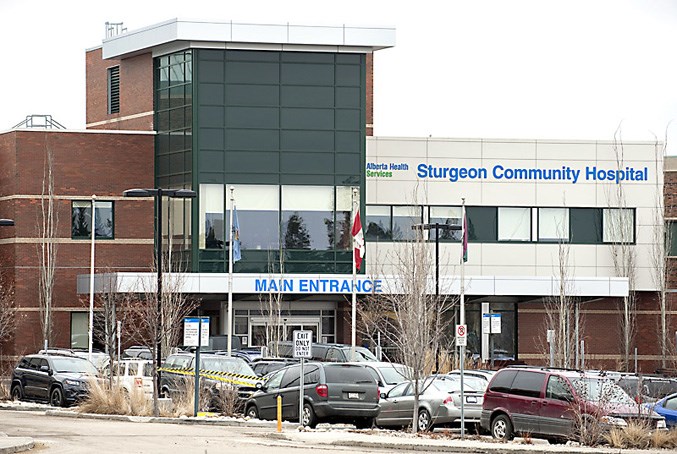Emergency department wait times are down and the number of emergency physicians is up at the Sturgeon Community Hospital, according to data from Alberta Health Services (AHS).
Emergency department wait times at the Sturgeon have been trending down since the beginning of 2024 and have reduced to 2.01 hours in January 2024 from 2.73 hours in January 2023, said an AHS spokesperson in an email.
“The average wait time, from arrival to the emergency department to the time that the patients are assigned a care space, at the Sturgeon Community Hospital emergency department in the past month was 1.91 hours,” the spokesperson said.
That’s shorter than all major Edmonton hospitals, such as the Grey Nuns Community Hospital (2.25 hours), Misericordia Community Hospital (2.04), Royal Alexandra Hospital (2.86) and the University of Alberta Hospital (2.52).
The number of emergency physicians at the Sturgeon has increased over the past two years and currently sits at 28.
In the past year, the hospital recruited eight emergency physicians for a combination of full- and part-time work.
“AHS is experiencing recruitment challenges across the province,” the spokesperson said. “These challenges are not unique to AHS and are being experienced nationally and internationally.”
Public should pressure government, AMA president says
Access to primary and acute care is “a struggle” across the province, Dr. Paul Parks, president of the Alberta Medical Association and Medicine Hat emergency physician, told an audience of Rotary Club members last week.
The shortage of physicians in the province and across Canada is “a disaster,” he said.
“You read every day about long waits and delays to care,” he said, especially for patients trying to access family doctors, who have been facing a “broken” funding model that is forcing them to shut down their clinics.
To overcome these challenges, the province will need to transform certain health care funding models, especially for family doctors, and other industry practices, rather than just “sprinkling little bits more on the old system,” he said.
Bringing in more physician assistants and nurse practitioners will be helpful, but “we need more of everybody,” Parks said. “I think we’re going to get 20 physician assistants in the next few years. Honestly, we need 1,000.”
Speeding up the process for recruiting international doctors is on the AMA’s radar, but “in a world where everybody is fighting all over for everybody, we have to ensure that we also value and retain the physicians we have,” he said.
To improve acute care and make room in emergency departments, the province must add more long-term care space, he said.
About one-third of the hospital capacity is taken up by “alternative level of care patients,” who aren’t in need of acute care but can’t go home to independent living.
“And it's not their fault,” he said. “They need resources. They need long-term care, continuing care.”
The province should get rid of its rules around assessing and retraining physicians who leave the country to make sure they’re “practice ready” for Alberta, he said. “We're so short on physicians, we don't have physicians to do the practice-ready assessments to bring those people in.”
The only way things will change is if the public puts pressure on the government, he said.
“They'll listen to me a little bit as the expert … but they're not going to fix it until you guys all tell them they've got to fix it,” he said. “The thing that moves the premier, the minister and government is Canadians and Albertans saying this is a priority for me and my family.”




